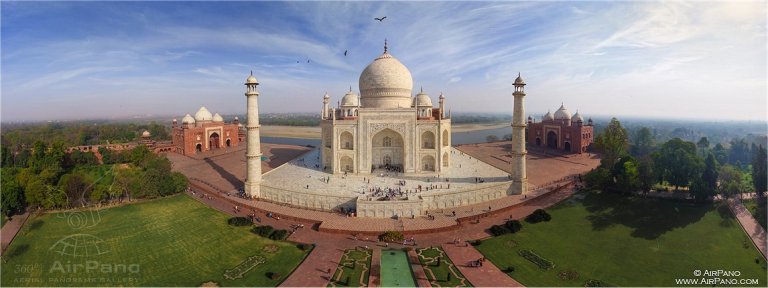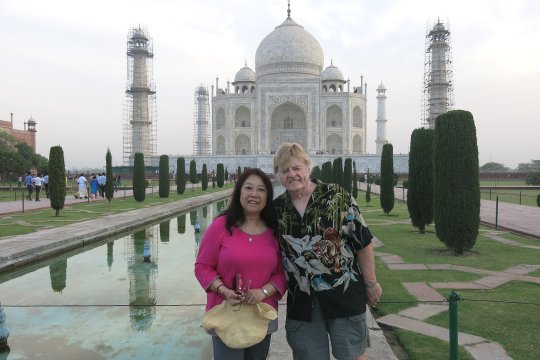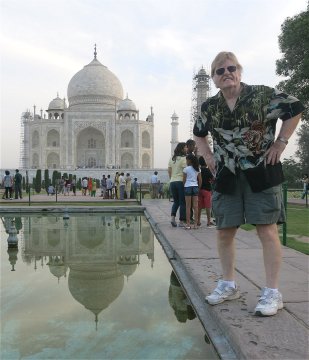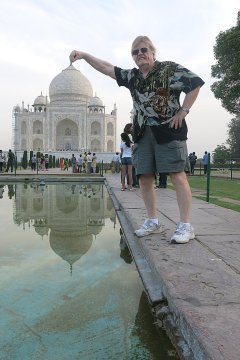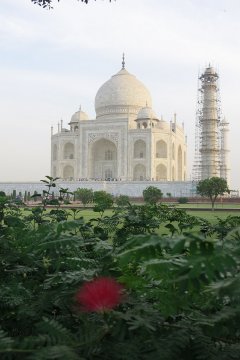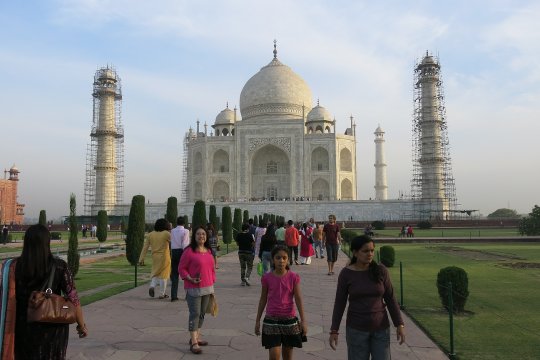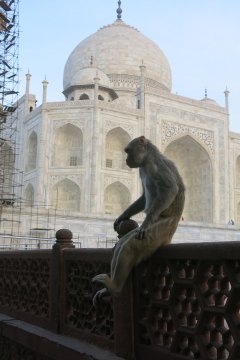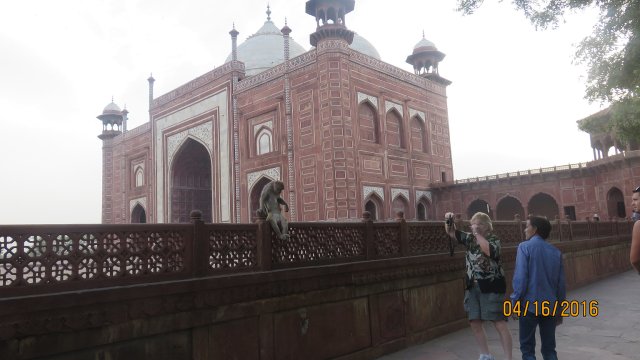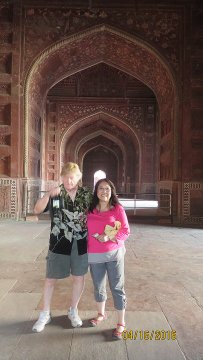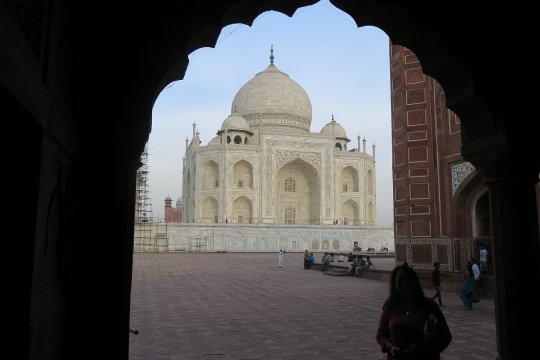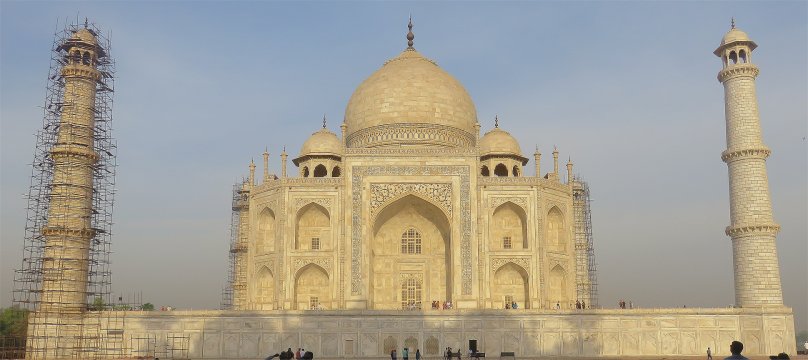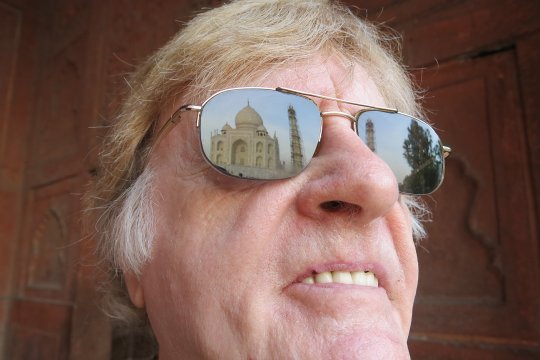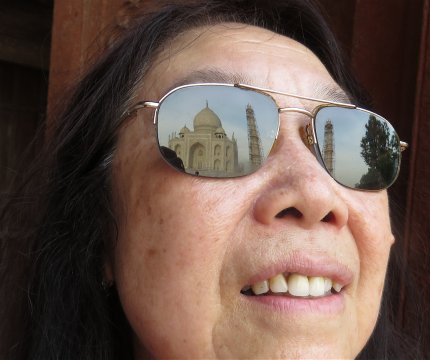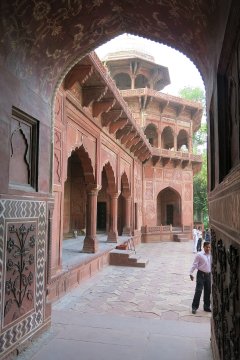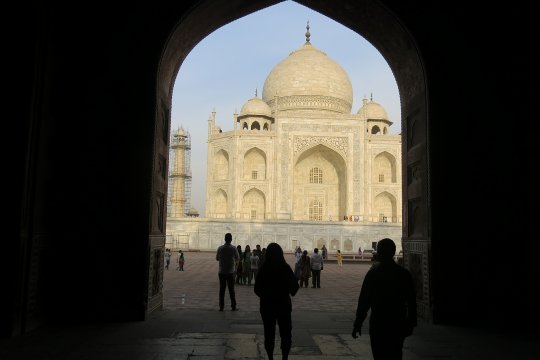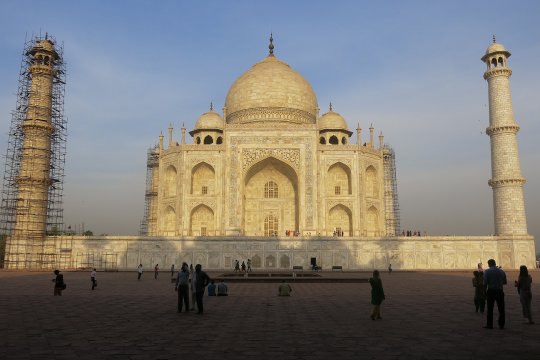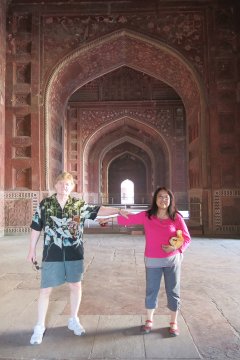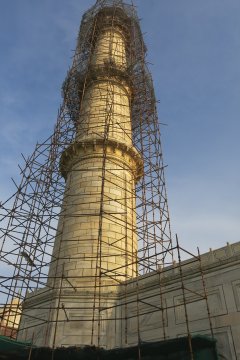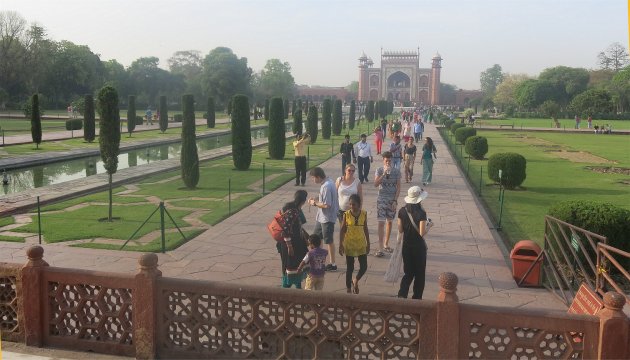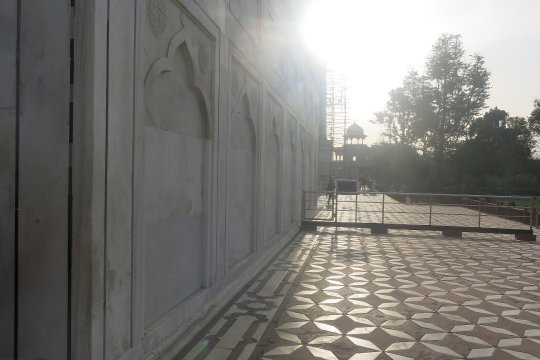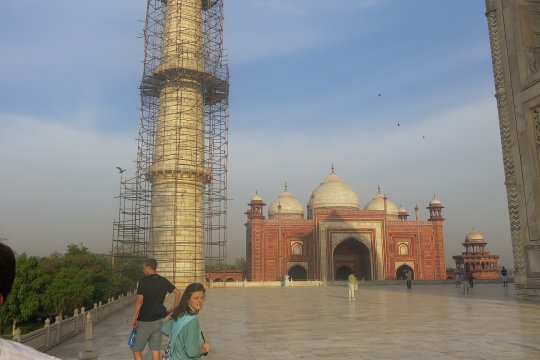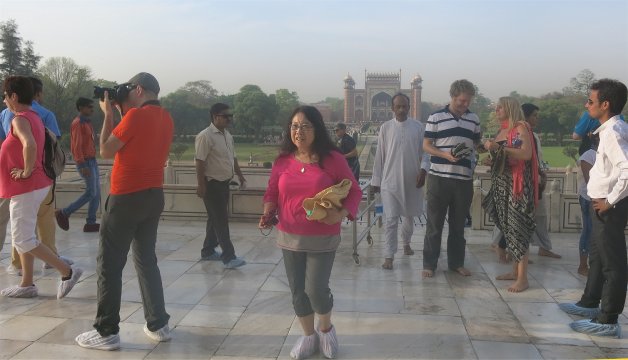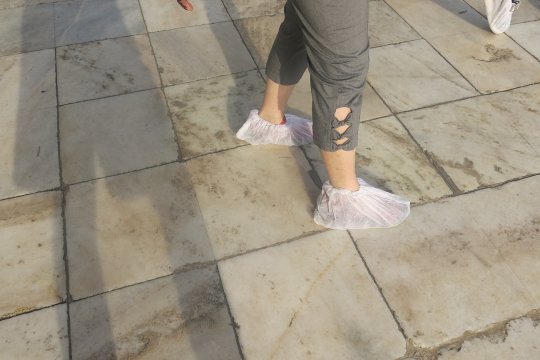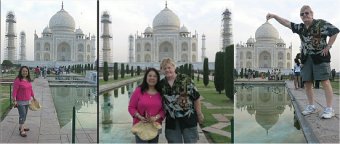The most spectacular feature of Taj Mahal
is the marble dome that surmounts the tomb. The dome is nearly 35 metres
high accentuated by the cylindrical "drum" it sits on which is approximately
7 metres (23 ft) high. The top of the dome is decorated with a lotus design
which also serves to accentuate its height. The shape of the dome is emphasized
by four smaller domed chattris (kiosks) placed at its corners, which replicate
the onion shape of the main dome. Their columned bases open through
the roof of the tomb and provide light to the interior. Tall decorative
spires (guldastas) extend from edges of base walls, and provide visual
emphasis to the height of the dome. The lotus motif is repeated on both
the chattris and guldastas.
The main finial was originally made of gold but was
replaced by a copy made of gilded bronze in the early 19th century. This
feature provides a clear example of integration of traditional Persian
and Hindu decorative elements. The finial is topped by a moon, a typical
Islamic motif whose horns point heavenward.
The minarets, which are each more than 40 metres tall,
display the designer's penchant for symmetry. They were designed as working
minarets—a traditional element of mosques, used by the muezzin to call
the Islamic faithful to prayer. Each minaret is effectively divided into
three equal parts by two working balconies that ring the tower. At the
top of the tower is a final balcony surmounted by a chattri that mirrors
the design of those on the tomb. The chattris all share the same decorative
elements of a lotus design topped by a gilded finial. The minarets were
constructed slightly outside of the plinth so that in the event of collapse,
a typical occurrence with many tall constructions of the period, the material
from the towers would tend to fall away from the tomb.
The decorative elements were created by applying paint,
stucco, stone inlays or carvings. Throughout the complex are passages from
the Qur'an that comprise some of the decorative elements.
The inner chamber is an octagon with the design
allowing for entry from each face, although only the door facing the garden
to the south is used. The interior walls are about 25 metres high and are
topped by a "false" interior dome decorated with a sun motif. The octagonal
marble screen or jali bordering the cenotaphs is made from eight marble
panels carved through with intricate pierce work. The remaining surfaces
are inlaid in delicate detail with semi-precious stones forming twining
vines, fruits and flowers.
The octagonal marble screen or jali bordering the cenotaphs
is made from eight marble panels carved through with intricate pierce work.
The remaining surfaces are inlaid in delicate detail with semi-precious
stones forming twining vines, fruits and flowers.
